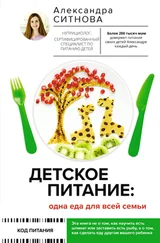11. Kelder, S. H., Perry, C. L., Klepp, K. I., & Lytle, L. L. (1994). Longitudinal tracking of adolescent smoking, physical activity, and food choice behaviors. American Journal of Public Health, 84 (7), 1121–1126.
12. Savage, J. S., Fisher, J. O., & Birch, L. L. (2007). Parental influence on eating behavior: Conception to adolescence. Journal of Law, Medicine & Ethics, 35 (1), 22–34. http://doi.org/10.1111/j.1748-720X.2007.00111.x.
13. Videon, T. M., & Manning, C. K. (2003). Influences on adolescent eating patterns: the importance of family meals. Journal of Adolescent Health, 32 (5), 365–373.
14. U. S. Food and Drug Administration. (n.d.). Learn about the nutrition facts label. Retrieved from https://www.accessdata.fda.gov/scripts/InteractiveNutritionFactsLabel/#intro.
15. Steele, E. M., Baraldi, L. G., da Costa Louzada, M. L., Moubarac, J. C., Mozaffarian, D., & Monteiro, C. A. (2016). Ultra-processed foods and added sugars in the US diet: Evidence from a nationally representative cross-sectional study. BMJ Open, 6 (3), e009892.
16. Schmitz, A. (Ed.). (2002). Sugar and related sweetener markets: International perspectives. Wallingford, Oxfordshire, UK: Centre for Agriculture and Biosciences International (CABI).
17. Ahmed, S. H., Guillem, K., & Vandaele, Y. (2013). Sugar addiction: Pushing the drug-sugar analogy to the limit. Current Opinion in Clinical Nutrition & Metabolic Care, 16 (4), 434–439.
18. Harvard Medical School. (2016, December 12). Artificial sweeteners: Sugar-free, but at what cost? Retrieved from https://www.health.harvard.edu/blog/artificial-sweeteners-sugar-free-but-at-what-cost-201207165030.
19. Environmental Working Group. (2014). Children’s cereals: Sugar by the pound . Washington, DC: Environmental Working Group.
Неделя 28. Покупайте впечатления, а не вещи
1. Van Boven, L., & Gilovich, T. (2003). To do or to have? That is the question. Journal of Personality and Social Psychology, 85 (6), 1193.
2. Caprariello, P. A., & Reis, H. T. (2013). To do, to have, or to share? Valuing experiences over material possessions depends on the involvement of others. Journal of Personality and Social Psychology, 104 (2), 199.
3. University of California Television. (n.d.). University of California TV series looks at clutter epidemic in middle-class American homes. Retrieved from http://www.uctv.tv/RelatedContent.aspx?RelatedID=301.
4. Maslow, A. H. (1943). A theory of human motivation. Psychological Review, 50 (4), 370.
Неделя 29. Безопасный интернет
1. Erickson, T. (2012, April 18). How mobile technologies are shaping a new generation. Harvard Business Review .
2. Common Sense Media. (2013). Zero to eight: Children’s media use in America 2013. Retrieved from https://www.commonsensemedia.org/research/zero-to-eight-childrens-media-use-in-america-2013.
3. Pew Research Center. (2015, April 9). Teens, social media & technology overview 2015: Smartphones facilitate shifts in communication landscape for teens. Retrieved from http://www.pewinternet.org/2015/04/09/teens-social-media-technology-2015/.
4. Pew Research Center. (2016, November 6). Mobile fact sheet. Retrieved from http://www.pewinternet.org/fact-sheet/mobile/.
5. Livingstone, S., & Smith, P. K. (2014). Annual research review: Harms experienced by child users of online and mobile technologies: The nature, prevalence and management of sexual and aggressive risks in the digital age. Journal of Child Psychology and Psychiatry, 55 (6), 635–654.
6. Collins, R. L., Martino, S., & Shaw, R. (2010). Influence of new media on adolescent sexual health (Working Paper WR-761). Santa Monica, CA: Rand Health.
7. The Henry J. Kaiser Family Foundation. (2005, February 27). Generation M: Media in the lives of 8–1 8 y ear-olds — Report. Retrieved from http://www.kff.org/other/generation-m-media-in-the-lives-of/.
8. Collins, R. L., Martino, S., & Shaw, R. (2010). Influence of new media on adolescent sexual health (Working Paper WR-761). Santa Monica, CA: Rand Health.
9. Javelin Strategy & Research. (2017, February 1). 201 7 i dentify fraud study. Retrieved from https://www.javelinstrategy.com/press-release/identity-fraud-hits-record-high-154-million-us-victims-2016-16-percent-according-new.
10. Power, R. (2011). Child identity theft: New evidence indicates identity thieves are targeting children for unused Social Security numbers. Carnegie Mellon CyLab.
11. EU Kids Online (2014). EU Kids Online: Findings, methods, recommendations . EU Kids Online, LSE. http://eprints.lse.ac.uk/60512/.
12. Mobile Media Guard. (n.d.). U. S. sexting laws. Retrieved from http://mobilemediaguard.com/state_main.html.
13. Pew Research Center. (2015, August 6). Teens, technology & friendships. Retrieved from http://www.pewinternet.org/2015/08/06/teens-technology-and-friendships/.
Неделя 30. Любите свое тело
1. Common Sense Media. (2015, January 21). Children, teens, media and body image. Retrieved from https://www.commonsensemedia.org/research/children-teens-media-and-body-image.
2. National Eating Disorders Association. (n.d.). What are eating disorders? Retrieved from https://www.nationaleatingdisorders.org/get-facts-eating-disorders.
3. Eisenberg, M. E., Wall, M., & Neumark-Sztainer, D. (2012). Muscle-enhancing behaviors among adolescent girls and boys. Pediatrics , peds-2012.
4. Field, A. E., Sonneville, K. R., Crosby, R. D., Swanson, S. A., Eddy, K. T., Camargo, C. A…. Micali, N. (2014). Prospective associations of concerns about physique and the development of obesity, binge drinking, and drug use among adolescent boys and young adult men. JAMA Pediatrics, 168 (1), 34–39.
5. Record, K. L., & Austin, S. B. (2016). «Paris Thin»: A call to regulate life-threatening starvation of runway models in the US fashion industry.
6. Nota, B. (2013, January 3). Israeli law bans skinny, BMI-challenged models. Retrieved from http://abcnews.go.com/International/israeli-law-bans-skinny-bmi-challenged-models/story?id=18116291.
7. BBC. (2017, May 6). France bans extremely thin models. Retrieved from http://www.bbc.com/news/world-europe-39821036.
Неделя 31. Больше рыбы и морепродуктов!
1. Kalmijn, S. V., Van Boxtel, M. P. J., Ocke, M., Verschuren, W. M. M., Kromhout, D., & Launer, L. J. (2004). Dietary intake of fatty acids and fish in relation to cognitive performance at middle age. Neurology, 62 (2), 275–280.
2. Chung, W. L., Chen, J. J., & Su, H. M. (2008). Fish oil supplementation of control and (n-3) fatty acid-deficient male rats enhances reference and working memory performance and increases brain regional docosahexaenoic acid levels. Journal of Nutrition, 138 (6), 1165–1171.
3. National Marine Fisheries Service, Office of Science and Technology. (September 2016). Fisheries of the United States, Current Fishery Statistics 2015. Retrieved from http://www.st.nmfs.noaa.gov/commercial-fisheries/fus/fus15/index.
Читать дальше
Конец ознакомительного отрывка
Купить книгу


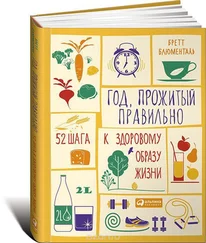
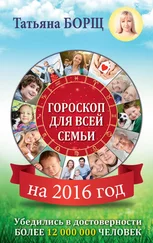
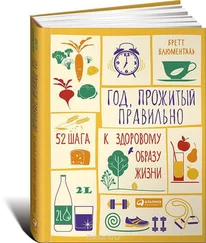
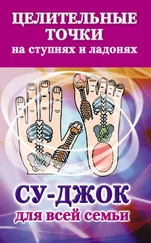
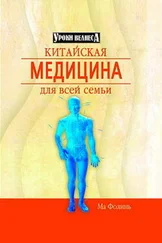
![Лора Гарнетт - Привычка гения [Как одна привычка может полностью изменить вашу работу и вашу жизнь] [litres]](/books/385616/lora-garnett-privychka-geniya-kak-odna-privychka-mozh-thumb.webp)
